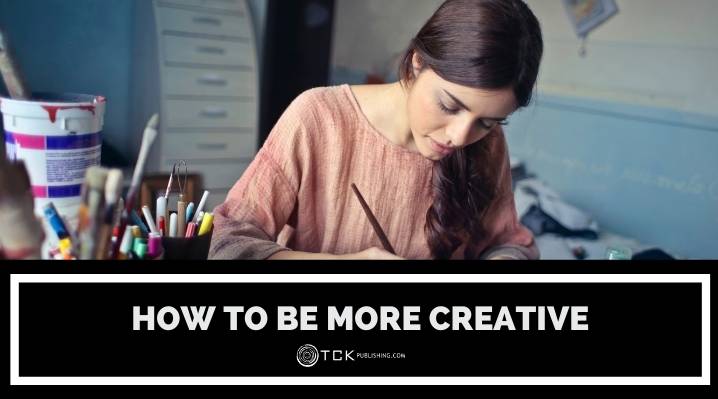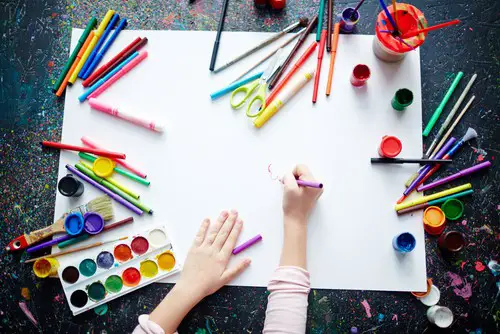
Do you ever look at some people and wonder how they do what they do? Maybe they make beautiful music, invent super cool gadgets, or have a way with words you think you’ll never have.
It turns out that even if those people are blessed with all the best ideas, you too can learn to improve your creativity and use your imagination to find new solutions and ideas.
Is It Possible to Become More Creative?
Many of us have grown up with the belief that some people are simply born creative, possessing talents the rest of us can only dream of and admire enviously.
However, recent studies and many thought leaders now argue that creativity is a skill like any other that can be leaned with practice.
Unlike many other skills, though, the best way to “learn” creativity isn’t by sitting through lectures and taking notes, but rather by hands-on practice and the application of creative thinking processes. This post will explain some of the ways you can practice creativity.
How to Be Creative
Use these 13 tips to boost your creativity (and have fun in the process!).
1. Ask questions.

Get curious about the world around you and how things work. You never know where your questions will lead you!
For example, in his book Zig Zag: The Surprising Path to Greater Creativity, research psychologist and author Keith Sawyer shares how the idea for Starbucks was born from the question, “How can I recreate the Italian espresso bar in the United States?”
But Howard Schultz reframed that question until he ended up analyzing what wasn’t working with that idea, and instead turned his focus to finding a way to create a comfortable, relaxing environment where one can enjoy great coffee.
If you’re trying to come up with a solution, try taking your original question and reworking or reframing it at least 10 times. One of your questions will likely be better than your original, and lead you to even better ideas.
2. Look for solutions.
Is there a frustrating problem you frequently encounter while using a product or going about your everyday life?
But don’t just complain—once you’ve got a list of imperfect features or situations, brainstorm ways to fix each issue.
This might not make you the next Steve Jobs, but it’s a great practice in critical thinking and creativity.
3. Stay open and aware.
Always try to stay open-minded and receptive to new ideas. This means being flexible and open to the fact that your original idea might not have been the best one, and embracing other, better solutions that come along.
This also applies to people you meet: strive to be less judgmental. You never know what kind of friendship, partnership, or inspiring encounter you might miss out on simply because you were quick to judge or write someone off.
Even events you see as accidents or obstacles might actually carry the answers or inspiration you’re looking for, so stay open to opportunities. Don’t just keep your head down and work steadfastly toward your original goal—that may not have even been the best goal in the first place!
4. Daydream.

There’s nothing wrong with a little healthy daydreaming, especially when it’s about your future. Picture your life in five years, and imagine that you’re highly successful.
Write down all the details you can imagine about that future life. Then, imagine all the steps you took to get there. This includes obstacles and how you overcame them, too.
This exercise is a great way to practice creativity, but also to realize and prepare for potential challenges you might not have thought of before.
5. Leave some tasks for tomorrow.
If you’re working on a task or project that isn’t extremely urgent and at the end of the day it’s slightly unfinished, don’t burn the midnight oil.
Instead, plan on tying up those loose ends the next day. As you go about your non-work activities (or even sleep), your subconscious will still be working to find a solution and may find inspiration from different sources. (Yet another reason why we get some of our best ideas in the shower!)
6. Make lists. Lots of lists!
Lists can be great for generating new ideas. If you don’t need to make a list for anything specific at the moment, you can make up your own exercises, like listing unconventional uses for household items, or all the foods you can think of that start with ‘L,’ for example.
Don’t worry if your ideas seem silly or stupid. This is just an exercise to get your creativity flowing!
7. Practice making associations.
Another fun exercise that’s related to making lists is using free association to generate new words. For example, let’s say you start with the word “rock,” which might lead to “roll,” which could lead to “butter,” and so on.
However, one rule is that you have to pick words that come from different categories or that form different connections. So for example, if you start with “apple,” you can’t just name another fruit (but you might say “computer”).
8. Use writing prompts.

Whether you’re a writer trying to find inspiration for a short story, or simply trying to flex your creative muscles, writing prompts can be a great help.
You can use them to write about personal experiences, or imagine new stories in completely different worlds. Whether you end up publishing these stories is up to you; in any case, it’s a great exercise for creativity.
9. Try writing morning pages.
Morning pages are three full pages that are written every morning, stream-of-consciousness style, about anything and everything that crosses your mind.
The idea behind this practice is that you’ll dump all the “stuff” that’s in your mind, so there’s room for more constructive and creative ideas to pop up throughout the day.
10. Surround yourself with diverse crowds.
It’s great to have a tight circle of friends, but don’t let that stop you from hanging out with new people. Chances are, you’re probably spending a lot of time with people who are like you and think like you. That’s fine, but you’re not very likely to find as many new ideas or perspectives in those crowds.
By surrounding yourself with a diverse crowd, you’ll get to hear new ideas and points of view, and learn new ways of doing things that you otherwise wouldn’t have considered. Plus, it’s always good to challenge your
11. Make something.
By “make something,” I don’t mean you have to sit down and come up with a new invention right now. But you should try once a day to create something, even if it’s just a doodle in your notebook before heading out of the office.
Draw a picture, paint, write a song, finish a puzzle, make a photo collage, build a Lego skyscraper—you can choose any activity you’d like, as long as it’s made from your own ideas.
12. Color.

Adult coloring books are excellent tools for expressing creativity, plus they’ve been proven to reduce stress levels and help alleviate anxiety.
To stretch your creativity, use your imagination to color the pages in unconventional ways. If your page features a palm tree, don’t think you have to color the leaves green and the trunk brown. It’s your creation! Why not try fuchsia palms?
13. Take time to play.
Why is it that kids seem to be so much more creative than adults? Perhaps it’s because as we grow up, we become trained to follow instructions, work hard, and follow strict formulas for success. We also don’t give ourselves much time to play—after all, that’s kids’ stuff, right?
The importance of play for adults has actually been backed by science as a way to reduce stress, build energy, and boost creativity.
When we play, we aren’t worried about whether we’re doing something right, or if we look silly—we just enjoy the moment and roll with it, which could lead to new discoveries and brilliant ideas.
In his book Six Thinking Hats, Dr. Edward de Bono reveals the often surprising ways in which deliberate role playing can make you a better thinker by creating an environment for clearer thinking, improved communication, and greater creativity.
One way to use role play to boost your creativity is imagining you’re someone else, of a different time, place, gender, etc. Write about or draw a picture depicting this other life.
Similarly, try thinking from another person’s perspective—perhaps your romantic partner, a colleague, or a friend. (This is also a great way to work out arguments and disagreements.)
What Makes a Person Creative?
In his book Creativity: The Work and Lives of 91 Eminent People, positive psychologist Mihaly Csikszentmihalyi lists several traits and skills that he believes his research has identified among creative people.
He observed that creative individuals are playful (see tip #13 above), but also disciplined. This means that they approach new ideas and projects with lightheartedness and excitement, but you’re also likely to see them working tirelessly to complete that project or perfect that idea.
And while creative people tend to daydream (see tip #4 above), they’re realistic dreamers. They can come up with imaginative solutions, but they also know they must find a way to bring those ideas to fruition and apply them to real-world issues.
So if you want to be more creative, start practicing the 13 tips outlined above, but also take these traits into consideration.
Take a Creativity Course
If you really want to ramp up your creativity, consider investing in a creativity course. Unleash Your Creative Genius is a course designed for creative professionals that will help you to access your great ideas and turn your them into reality.
For just $97, you’ll get access to valuable trainings and resources that will teach you how to create a clear path for creativity, set goals, start new projects, and more.
Boost Your Creativity
No matter your occupation, you probably stand to benefit in some way by improving your creativity. For example, you’ll become a better problem-solver, and maybe even find new ways to save money.
Regardless of your motive, these exercises can help train your brain to find creative solutions and spark new ideas.
How do you express creativity? Share your tips in the comments below!
If you enjoyed this post, then you might also like:
- How to Start a Story: 6 Creative Ways to Get Up and Writing
- 72 Journal Prompts to Boost Your Creative Writing Skills
- What Is Creative Writing? Types, Techniques, and Tips
- 70 Creative Writing Prompts to Inspire You to Write
As a blog writer for TCK Publishing, Kaelyn loves crafting fun and helpful content for writers, readers, and creative minds alike. She has a degree in International Affairs with a minor in Italian Studies, but her true passion has always been writing. Working remotely allows her to do even more of the things she loves, like traveling, cooking, and spending time with her family.
